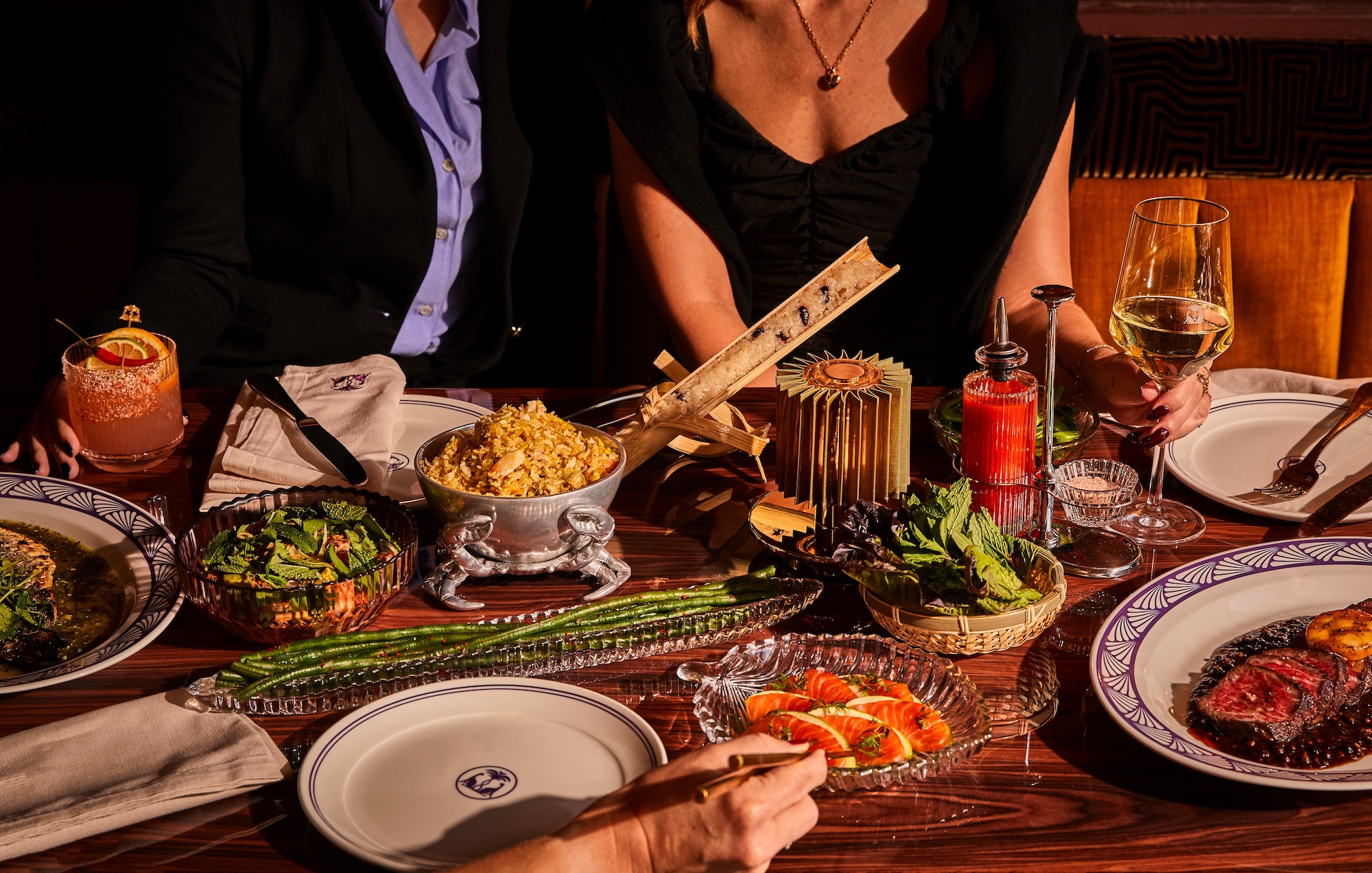Twin Tails is AvroKo's Latest Design Marvel at Columbus Circle

Photography by Christian Harder
At Twin Tails, the design's orchestration of materials tells a particularly nuanced story. The journey begins with custom Lava Stone floor tiles leading guests through a processional corridor - a classic AvroKo move that builds anticipation through choreographed revelation. This opens dramatically into a space where pink and amber mirror-paneled walls create a sophisticated interplay of reflection and warmth, nodding to the mirror-clad excesses of 1980s Manhattan while remaining decidedly contemporary in their execution.

Photography by Christian Harder
The tension between raw and refined materials emerges as a central theme. Terracotta and rattan ceiling panels provide an earthen counterpoint to the sleek green and white marble bar, while checkerboard marble flooring is thoughtfully framed by deep green stained wood. This material dialogue eschews simple pastiche, instead creating what might be called "considered maximalism" - where each element, from the deep yellow velvet banquettes to the custom amber glass chandeliers, contributes to a cohesive atmospheric whole.

Photography by Christian Harder
The art program further reinforces this temporal conversation. Works by Jordy Kerwick and Melissa Monroe channel neo-expressionism, that definitive 1980s movement, while remaining thoroughly contemporary in their execution. This curatorial choice demonstrates how the space engages with historical reference points without becoming beholden to them.

Photography by Christian Harder
Perhaps most significantly, AvroKo has managed to create a design that feels both theatrical and intimate - no small feat in a 140-seat restaurant with expansive Central Park views. The split-level dining room configuration breaks down the scale effectively, while the "speakeasy-type bar room" provides a more intimate counterpoint to the main space's grandeur.

Photography by Christian Harder
The overall effect is one of temporal synthesis rather than simple revival. Twin Tails doesn't just reference 1980s design - it refracts those influences through a contemporary lens, creating a space that feels both nostalgic and forward-looking. In doing so, it offers a compelling example of how restaurant design can engage with historical precedent while remaining firmly rooted in the present moment.

Photography by Christian Harder
This thoughtful layering of references, materials, and spatial experiences suggests a maturing approach to hospitality design - one that understands how to deploy historical references and cultural influences in service of creating genuinely contemporary spaces. The result is neither pastiche nor simple homage, but rather a sophisticated environment that tells its own unique story through carefully orchestrated design elements.
Twin Tails
10 Columbus Circle 3rd Floor
New York, NY 10019
Website